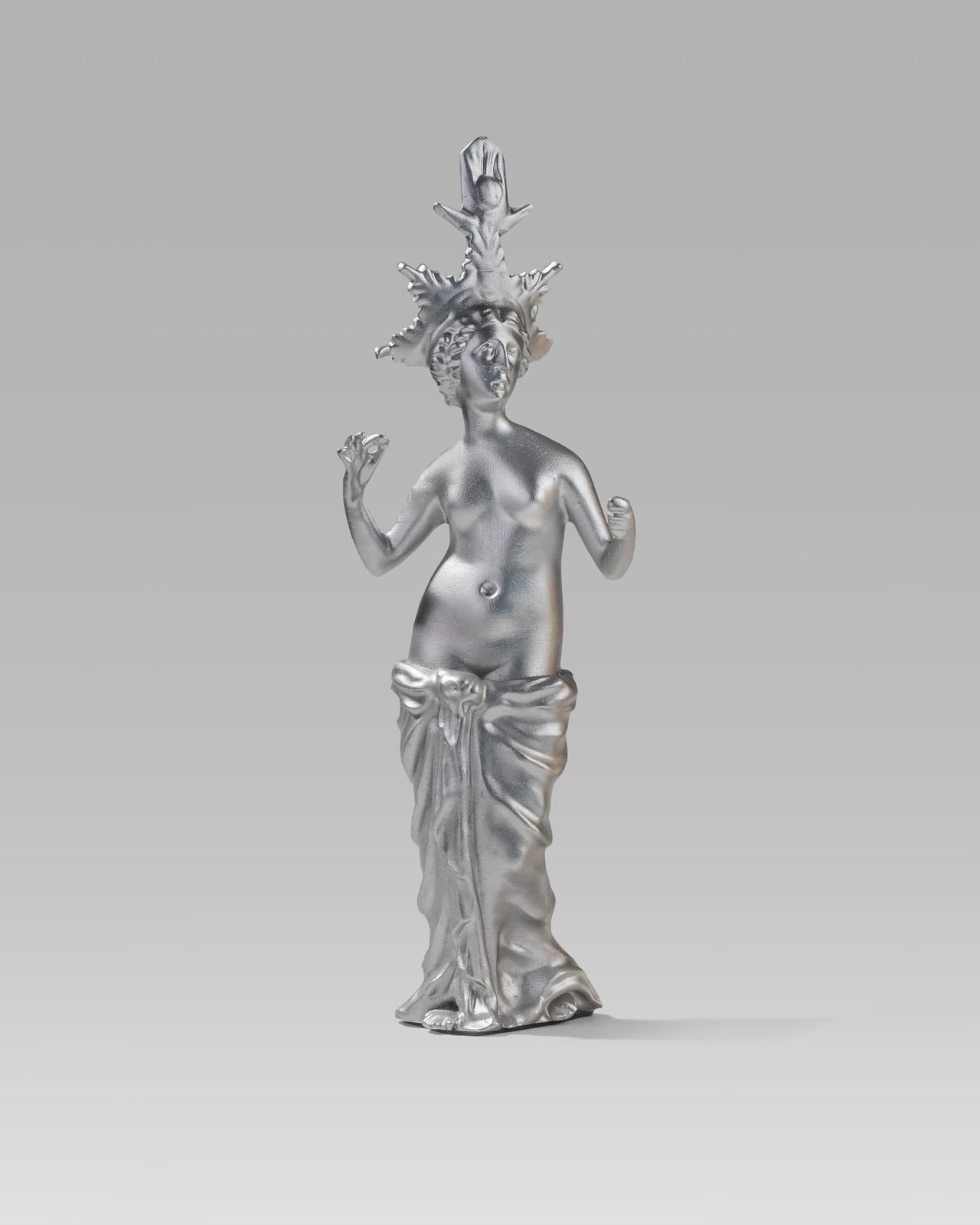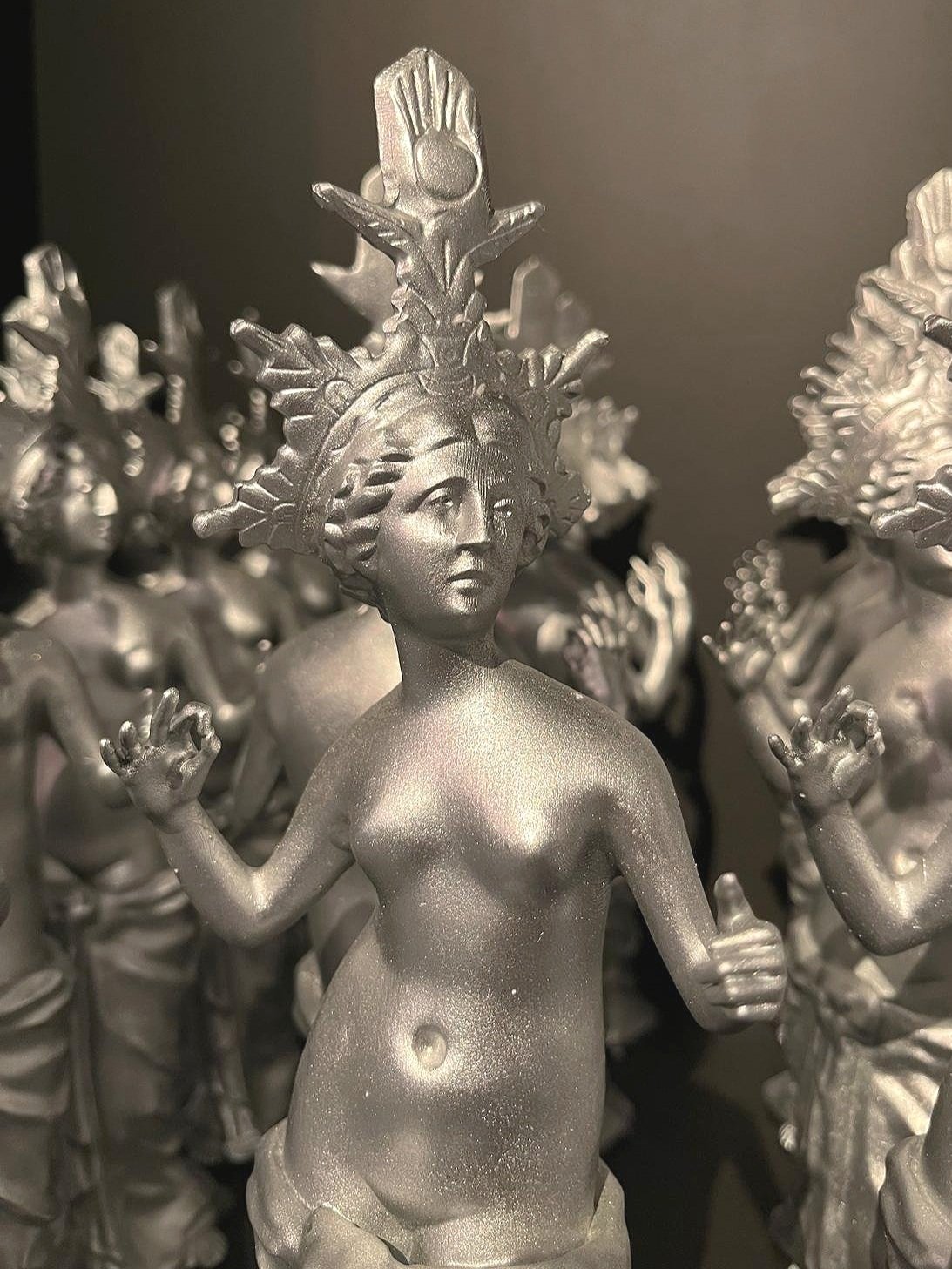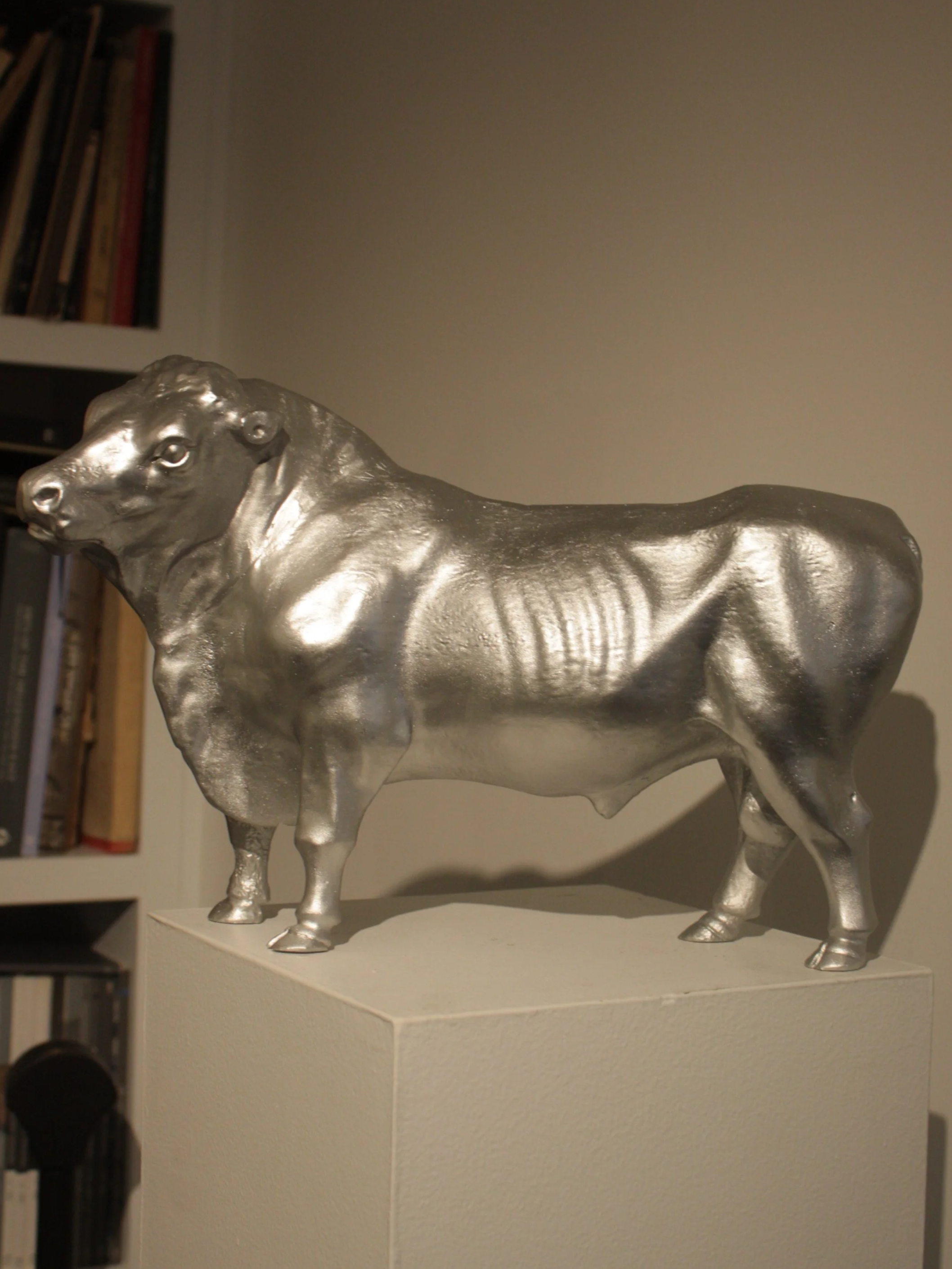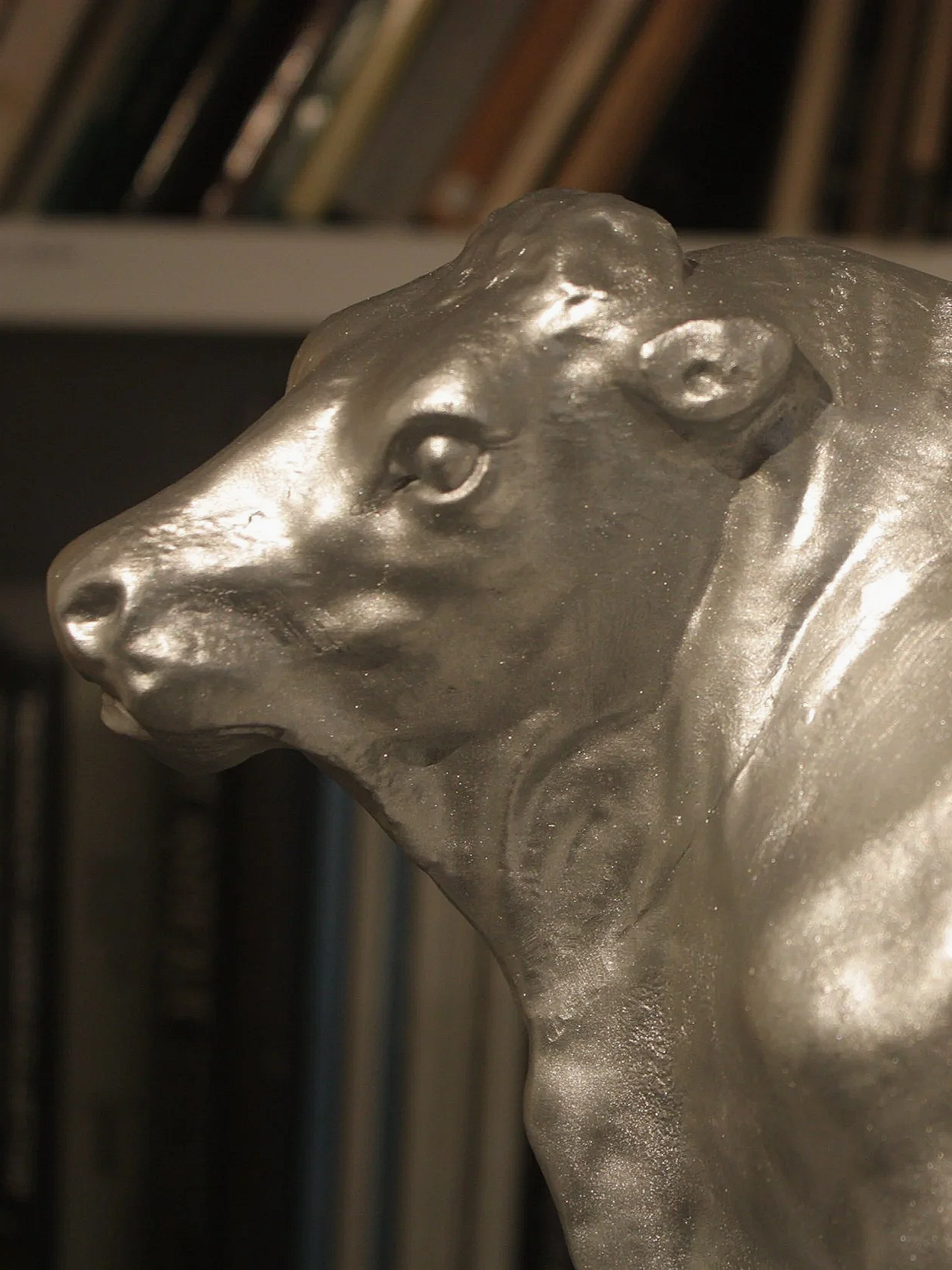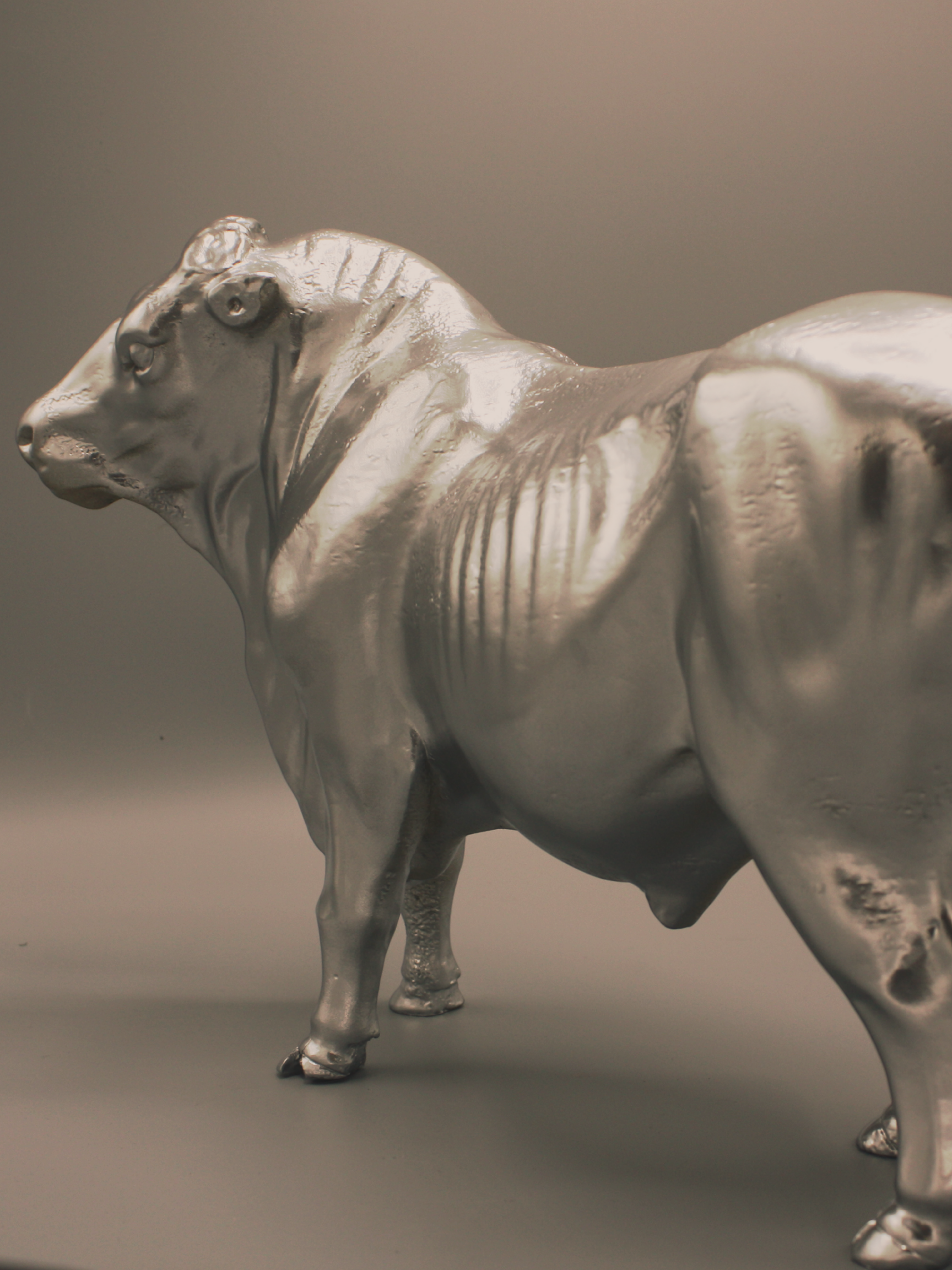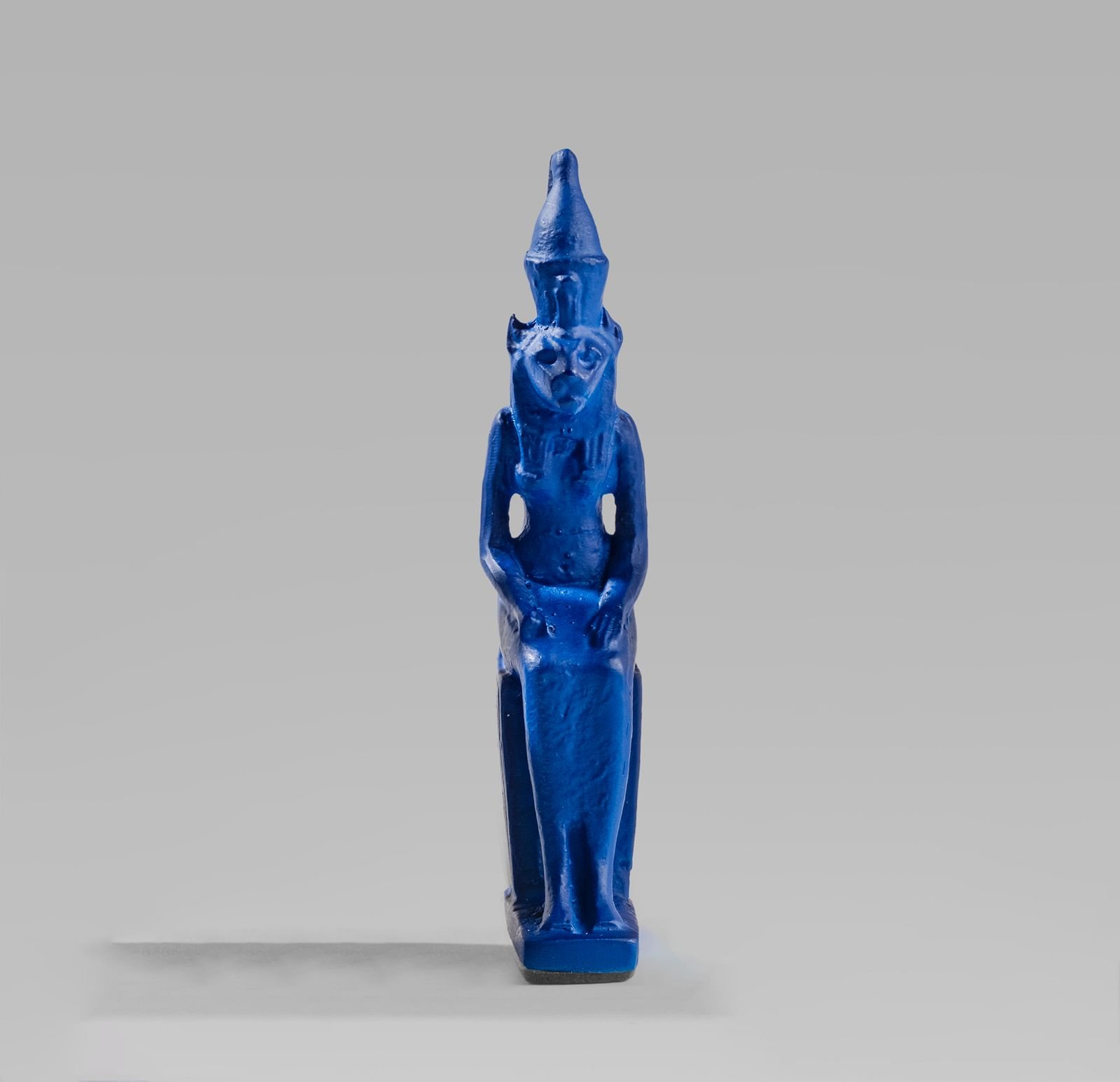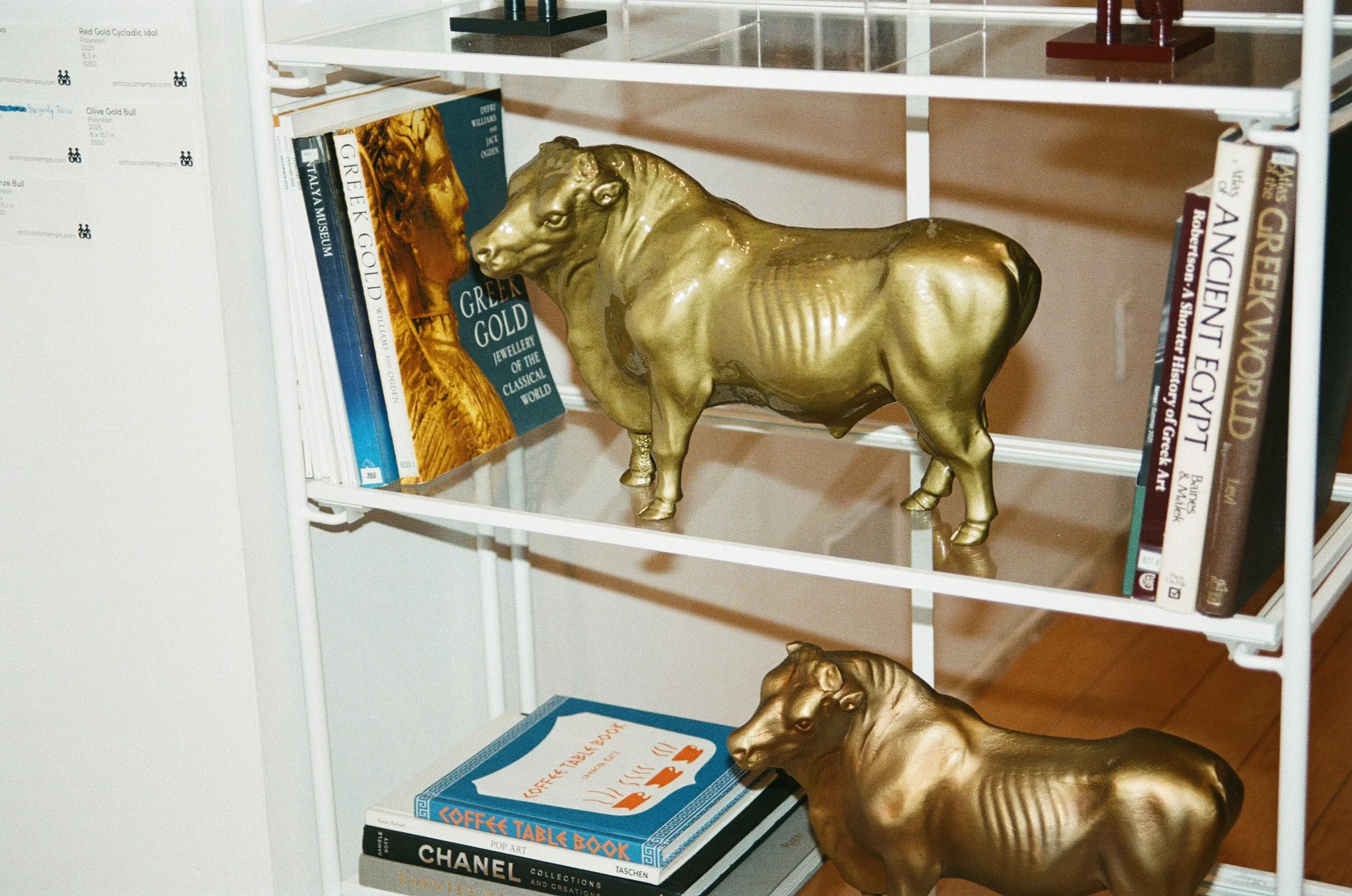 Image 1 of 3
Image 1 of 3

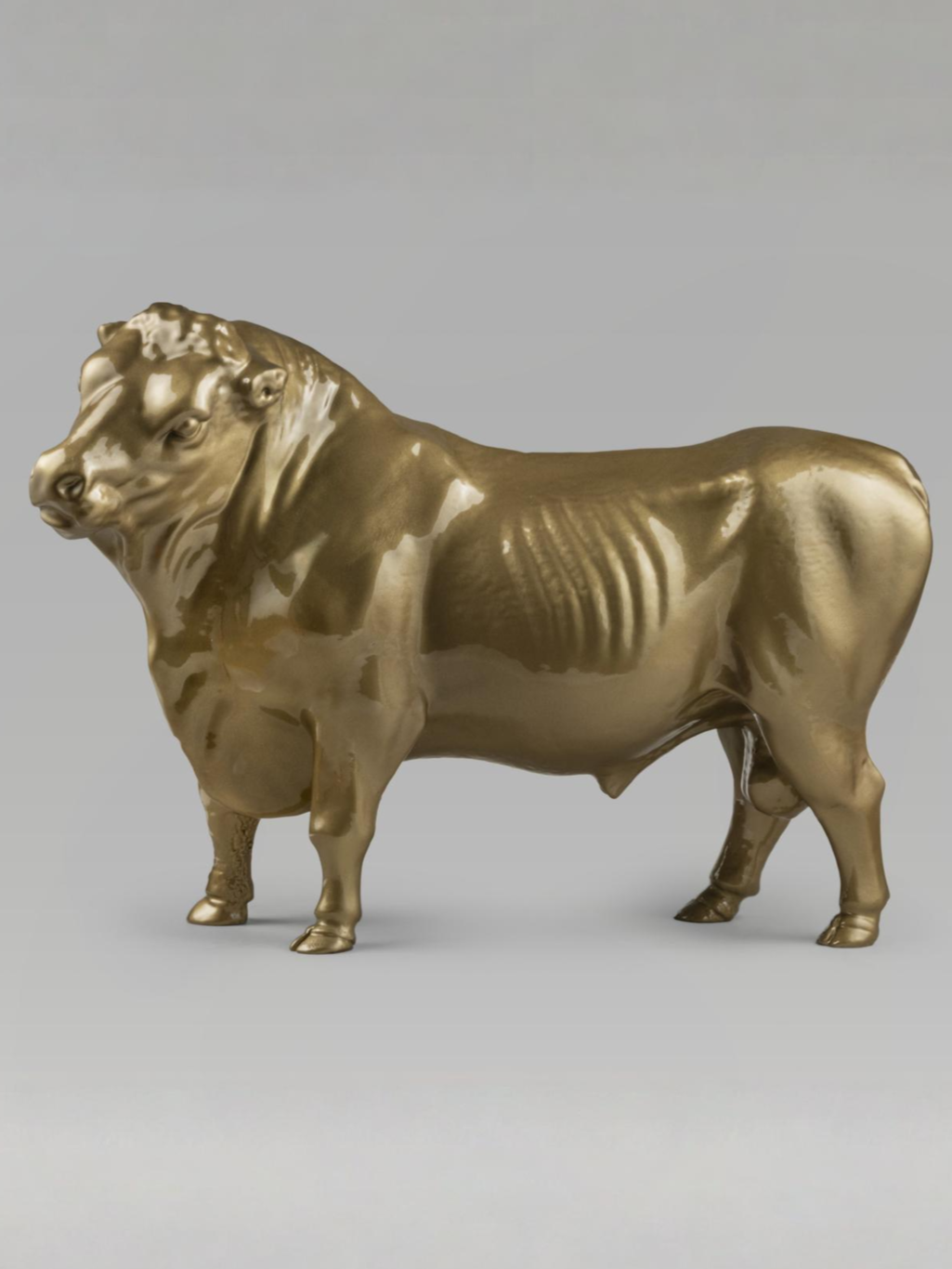 Image 2 of 3
Image 2 of 3

 Image 3 of 3
Image 3 of 3




Greek Olive Gold Bull
Alexander Aboutaam
Limited Edition of 11
Contempo
2025
High-grade polyresin, painted and hand-polished
L: 38.75 cm (15.25 in)
Ancient Original
Greek, Late Hellenistic ca. 2nd - 1st century B.C..
Alabaster
H: 28.5 cm (11.2 in)
Description
This olive gold-colored polyresin Contempo depicts a striding bull. Its warm hue evokes the sunlit landscapes of the Mediterranean, reimagining the ancient bull as a symbol of strength and endurance in farming and in the field.
The original alabaster statuette of the bull is Greek, Late Hellenistic ca. 2nd - 1st century B.C. The alabaster bull’s color is yellowish-brown, with whitish and brown hues corresponding to the natural color of the bull's skin. As a material, alabaster was frequently used for ritual vessels and cosmetic containers, as well as in sculpture, since the 3rd millennium B.C.
In the ancient world, bulls were widely used as working animals in the farms, in transportation for driving the heavy carriages and military carts. They also remained a significant source of human nutrition. In religious life, the bull was associated with the Egyptian cult of the Apis Bull under the cult of Osiris, god of the dead. In the Graeco-Roman world, the bull was linked to the supreme god, Zeus/Jupiter; a bull sacrifice was considered the most appropriate dedication.
The figure leans on his right leg. The position of the shoulders and neck muscles indicates that the head was turned to the right following the movement of the right arm, which was outstretched and probably held a wreath, a ribbon, a branch, while the left arm was relaxed. The well shaped pectoral muscles and upper abdomen with pronounced costal margins define the well trained body. The slender upper arms, the soft rounded shape of the lower abdomen, and the absence of pubic hair reveal his adolescence.
Alexander Aboutaam
Limited Edition of 11
Contempo
2025
High-grade polyresin, painted and hand-polished
L: 38.75 cm (15.25 in)
Ancient Original
Greek, Late Hellenistic ca. 2nd - 1st century B.C..
Alabaster
H: 28.5 cm (11.2 in)
Description
This olive gold-colored polyresin Contempo depicts a striding bull. Its warm hue evokes the sunlit landscapes of the Mediterranean, reimagining the ancient bull as a symbol of strength and endurance in farming and in the field.
The original alabaster statuette of the bull is Greek, Late Hellenistic ca. 2nd - 1st century B.C. The alabaster bull’s color is yellowish-brown, with whitish and brown hues corresponding to the natural color of the bull's skin. As a material, alabaster was frequently used for ritual vessels and cosmetic containers, as well as in sculpture, since the 3rd millennium B.C.
In the ancient world, bulls were widely used as working animals in the farms, in transportation for driving the heavy carriages and military carts. They also remained a significant source of human nutrition. In religious life, the bull was associated with the Egyptian cult of the Apis Bull under the cult of Osiris, god of the dead. In the Graeco-Roman world, the bull was linked to the supreme god, Zeus/Jupiter; a bull sacrifice was considered the most appropriate dedication.
The figure leans on his right leg. The position of the shoulders and neck muscles indicates that the head was turned to the right following the movement of the right arm, which was outstretched and probably held a wreath, a ribbon, a branch, while the left arm was relaxed. The well shaped pectoral muscles and upper abdomen with pronounced costal margins define the well trained body. The slender upper arms, the soft rounded shape of the lower abdomen, and the absence of pubic hair reveal his adolescence.
Creation
The creation of the contempo starts with research into authentic masterpieces, allowing Antico Contempo to determine how antiques can be thoughtfully reimagined through a contemporary lens. Every piece is examined to identify its unique qualities and what processes are required for adaptation.
High-resolution 3D scans are captured using structured light and infrared sensing, with real-time refinements made to preserve surface nuances and structural integrity. The raw data is reworked to create watertight, workshop-ready meshes.
Through a meticulous back-and-forth process of digital sculpting, 3D printing, and casting and molding, Antico Contempo creates a physical art piece that combines aesthetics of both the ancient and contemporary world.


